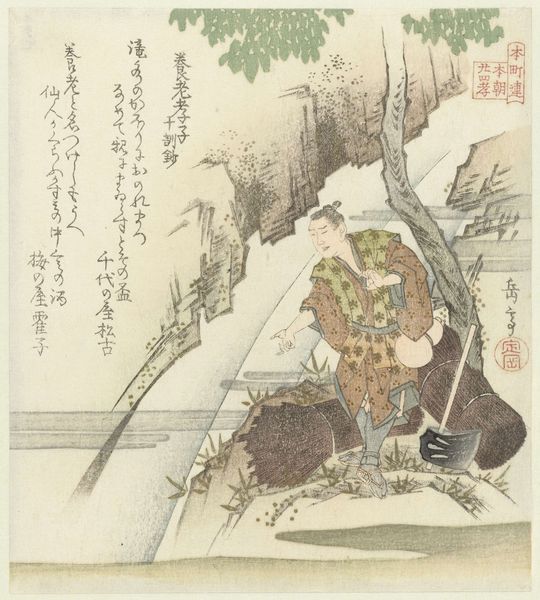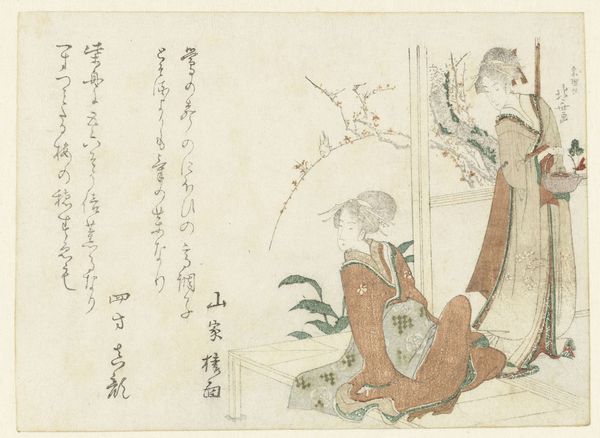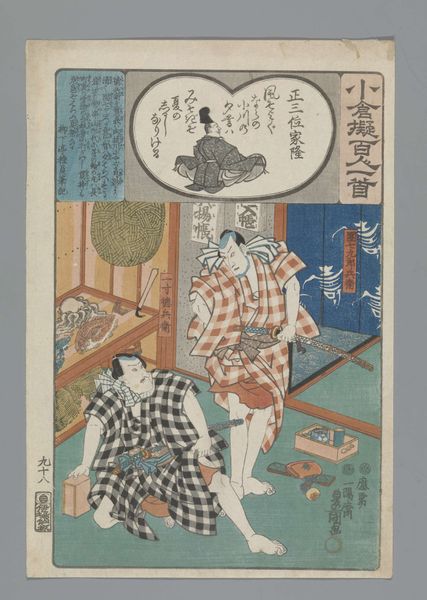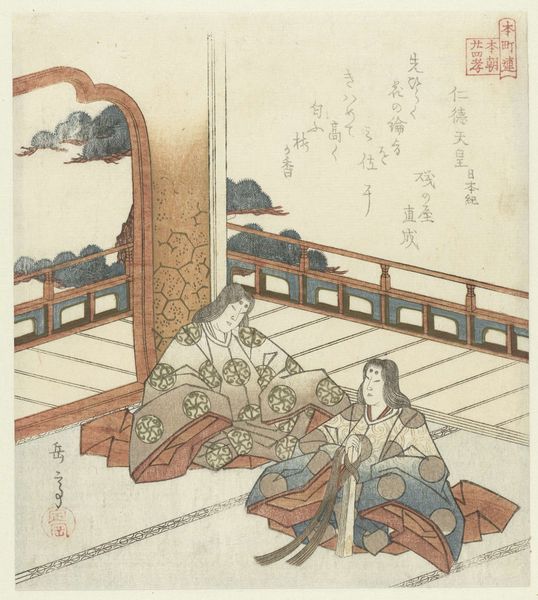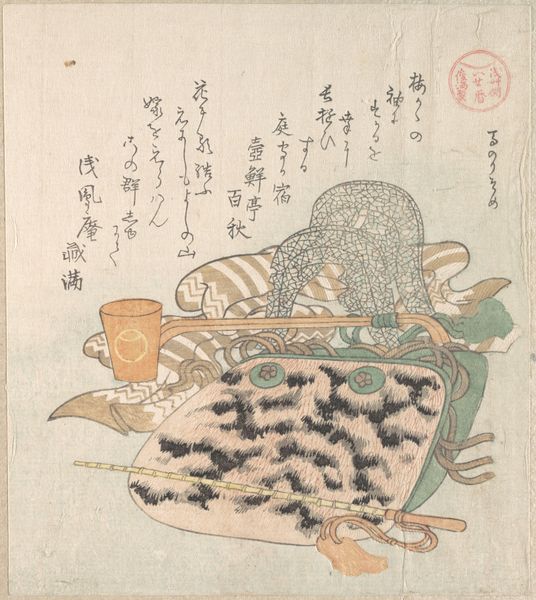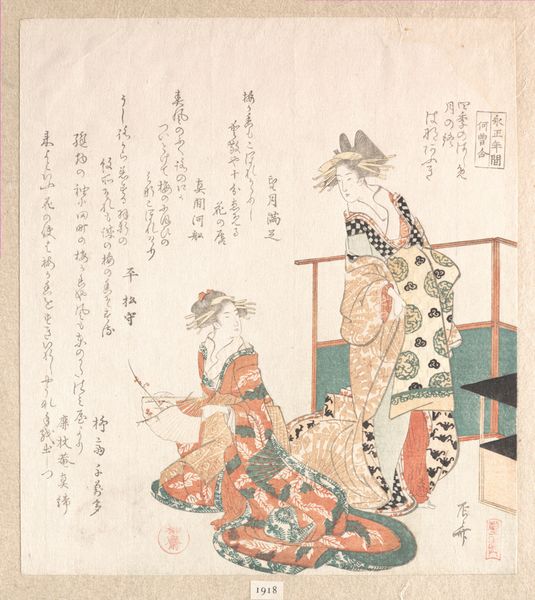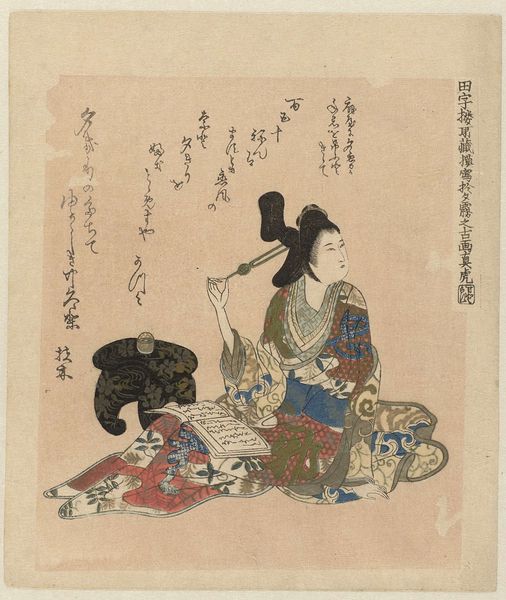
print, woodblock-print
#
narrative-art
# print
#
asian-art
#
landscape
#
ukiyo-e
#
figuration
#
woodblock-print
Dimensions: height 204 mm, width 179 mm
Copyright: Rijks Museum: Open Domain
Curator: Hokkei, wasn't he just a brilliant observer? Here, take a look at "The Shitanomiya Rest Stop," a woodblock print from 1833, currently housed at the Rijksmuseum. My first thought is—what an interesting feeling of contained exuberance! Editor: Interesting… It’s such an intimate still life, yet hints at larger societal themes about travel and observation through this very confined scene of object arrangement. Are those…turtles swimming in a framed picture, under a cloth? Curator: Yes! Hokkei presents a framed painting of two turtles gracefully navigating a swirling blue stream, complete with its own drapery, plus paired vases with knotted golden cords on a serving table. It almost reads like a little stage, doesn’t it? Editor: Definitely a constructed performance. The turtles become symbols of longevity and good fortune, right? But held captive within art… Is Hokkei commenting on the commodification of luck, perhaps reflecting the Edo period's evolving class structures and expectations, the merchant class rising within the old order? Curator: It’s all so delicately rendered! See the varying line weights? The way the water curls almost flirtatiously around the turtles? Even the glaze on the vases feels…present. Do you think the drape over the frame alludes to revealing secrets, like the magician just about to disclose how the rabbit got in the hat? Editor: Could be, but that curtain might be also hiding social imbalances in plain sight. Maybe Hokkei uses the visual pleasure to invite viewers in, only to then consider what lies beneath such displays. The artifice of the composition is pretty loud, isn’t it? It does question authenticity—whether social or emotional. Curator: Right, and that tension elevates it beyond mere decoration! I think it prompts introspection about seeing versus understanding. Or maybe, that it can also suggest the power that art can bring as an introspective portal? Editor: Maybe! I see it as an act of unveiling the hidden structures and the constructed meanings embedded within our own experiences. Curator: Thanks! As usual, you take my meandering thoughts somewhere insightful, which I think perfectly complements this tiny world created by Hokkei, it opens so many little doors of imagination. Editor: You’re very welcome! And just remember that beneath beauty lies a complex web of social construction!
Comments
No comments
Be the first to comment and join the conversation on the ultimate creative platform.




